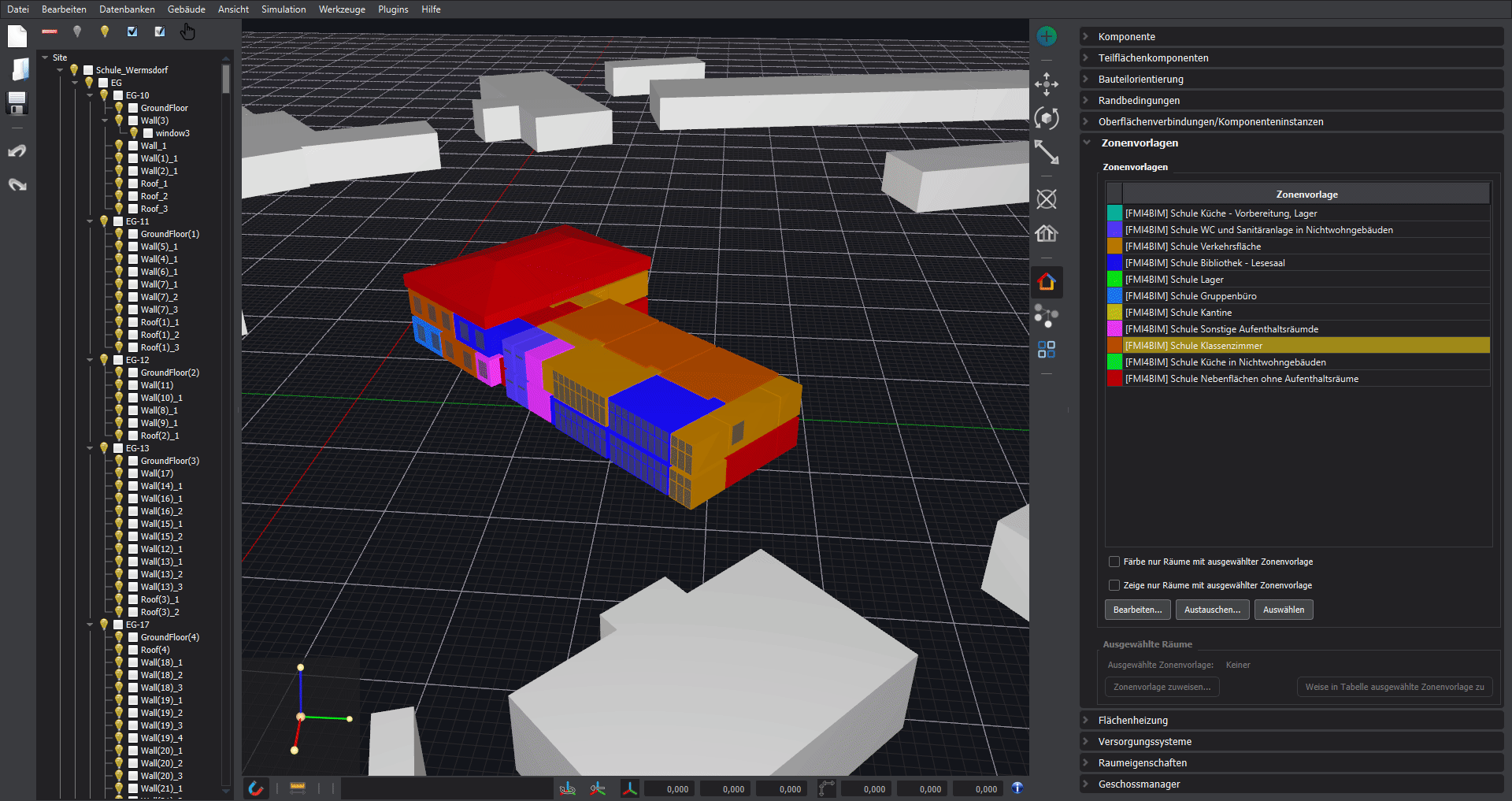Skip to content
Building Energy Simulation
- Calculate the actual heating, cooling and electricity demand of a building over time throughout the year
- Import existing building models in IFC format
- Quickly and easily show the impact of different insulation variants and different usage profiles
- Go beyond the classic steady state dimensioning: tailor your heating and cooling generators individually and reveal simultaneity with your own generated PV power
- Calculate the summer thermal protection according to DIN 4108-2
- Calculate the dynamic heating load according to DIN 12831
- Calculate the cooling demand according to VDI 2078
- Evaluate the comfort as well as the daylight supply in rooms
District Heating and Cooling Networks
- Determine heat losses and pressure drops through dynamic thermo-hydraulic simulation
- Import existing GIS data (e.g. from QGIS) in geoJSON format.
- Use practical and intelligent algorithms to complete the network topology
- Dimension complex heat networks based on existing or own pipe databases
- Configure your supply and sub stations with individual models for circulation pumps, controlled valves, heat pumps and heat exchangers using parameters from data sheets
- Keep track of all parameters at all times with false color view and visually scaled pipe diameters
- Export the final network topology in geoJSON format (e.g. back to QGIS) and generate a pdf plan
SIM-VICUS is used by
- Designers of energy concepts for buildings and districts
- HVAC planners
- Architects
- public utilities
- Researchers in the field of renewable energy concepts
Advantages of SIM-VICUS
- A more precise dimensioning of heat and cooling generators directly leads to economic advantages, e.g. geothermal heat sources can be dimensioned more precisely or realized at all
- Get realistic heat demand curves, much more accurate than with over-simplified monthly balance methods
- Determine the required flow temperatures of your heating and cooling systems more realistically
- Generate a reliable forecast of lifecycle costs for both capital and operating expenses and make informed, economically worthwhile planning decisions
- Life-cycle or subsequent costs can be better estimated by supporting building simulation
- Risk scenarios, such as climate change, special load scenarios, vacancy or change of the building use can be investigated in advance
- Building simulation saves resources and aims to improve the well-being of building users
- Building simulation is a necessary tool to investigate both, the sustainability and the economic efficiency of a building






